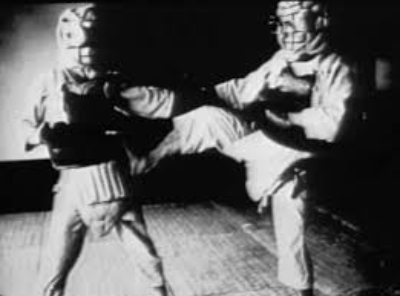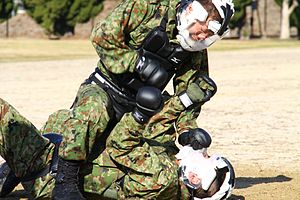About
The idea of combining the best aspects of different martial arts, boxing and wrestling together is not a new one. Kempo masters were already doing this in Japan in the early years of the Twentieth Century.

Kempo masters collaborated to create a great variety of highly effective martial arts methods that are still used today by the Japanese military, special forces and police, as well as parts of the Japanese underworld.

Kempo also influenced the development of modern martial arts movements and sports such as Nippon Kempo, Krav Maga, Hawaiian Kempo, American Kenpo, Shin Kakutojutsu, Shooto, K-1 and MMA.
Kempo is unusual among modern martial arts in that it places a heavy emphasis on weapons training. The idea is that a practitioner must be highly skilled in the use of a weapon in order to be able to defend himself against it.
Frequently Asked Questions
What is Kempo?
Kempo is the Japanese transliteration of Quanfa, one of the Chinese terms for martial arts. Historically, Kempo has referred to any martial arts practiced in Japan that have connections to China, or other associations with China. Therefore Kempo is not a martial art, but rather "Japanese martial arts of Chinese origin or association".
Following the Meiji Restoration in 1868, the samurai fell into disfavour in Japan, partly because they had failed to stop the Americans from forcing Japan open to trade, and partly because the lower classes of society (who the samurai had oppressed for hundreds of years) had become much more powerful. From this time up until the revival of the samurai's image in the 1920s and 30s in the lead up to World War 2, Kempo also came to be applied to any martial arts of non-samurai origin, including western arts like boxing and wrestling. Under this alternative definition, Kempo is any martial art that didn't come from the former samurai class.
What is the difference between Kempo and Kenpo?
There is no difference at all. These are just two different ways to pronounce the same word (拳法 in Japanese). Separately, the two syllables are pronounced "Ken" and "ho", but when you put them together in Japanese speech it leads to a slight sound change, "Kempo". This kind of slight sound change when combining syllables is a very common feature of the Japanese language in general.
Where did Kempo come from?
Kempo originated from a combination of Chinese, Japanese, Thai and Western martial arts. Please refer to our history page for more detail.
What is Mishima Kempo?
Mishima Kempo is a "style of styles", or to put it another way, an eclectic approach to martial arts. Mishima Kempo was founded at the Mishima Shrine in Nara Prefecture, Japan in 1994.
Where does Mishima Kempo come from?
Historically, our Kempo is descended from Master Hao En Guang (this is his Chinese name - his Japanese name was Kaku Onkou). Master Hao, a famous bodyguard and successful prizefighter, was selected by the Chinese martial arts community to teach martial arts in Japan in the early years of the 20th Century. He was famous for cross-training in different martial arts. Like Master Hao, we don't like to put our Kempo in a box, preferring to stay flexible. We use many different methods from more than ten different martial arts, and cross-train frequently with other martial arts. Mishima Kempo includes various types of Kempo that were passed on in the Kansai region of Japan and incorporates various Chinese, Western and Thai martial arts traditions. Please see the history page for more detail.
What training methods are used?
We have a separate list of training methods on this site.
What about forms?
Forms are treated a little differently in Mishima Kempo. It is not enough to simply know the movements of each form. We have a rule that if you don't know at least one practical application for every single movement of the form, and can apply it in sparring against a resisting opponent, then you don't "know" the form. In this sense, Mishima Kempo forms are like catalogues of sparring techniques. This counts for both weapons and empty hand forms.
What is the Japanese terminology used in Kempo?
As a result of its eclectic origins, Kempo terminology can be confusing, with multiple Japanese words used for the same things. To add to the difficulty, sometimes things are named with native Japanese terms, and at other times they are named with Japanese transliterations of original Chinese terms (or both). Mishima Kempo can be particularly challenging in this respect because we incorporate multiple Kempo styles into one. We have created a glossary page to try to help with this. Understanding the meaning of some of the terms, especially the figurative ones of Chinese origin, can help to understand the meaning and flavour of the Kempo methods, so we maintain their use despite the difficulty involved.
